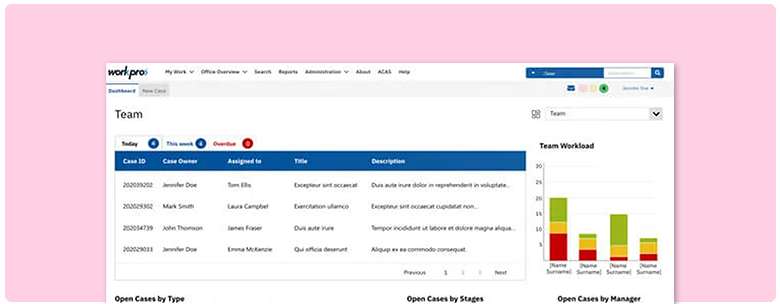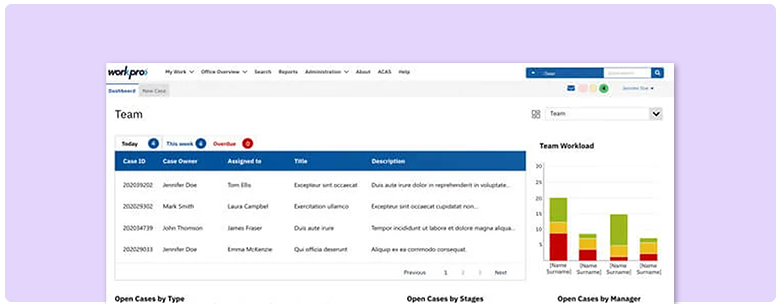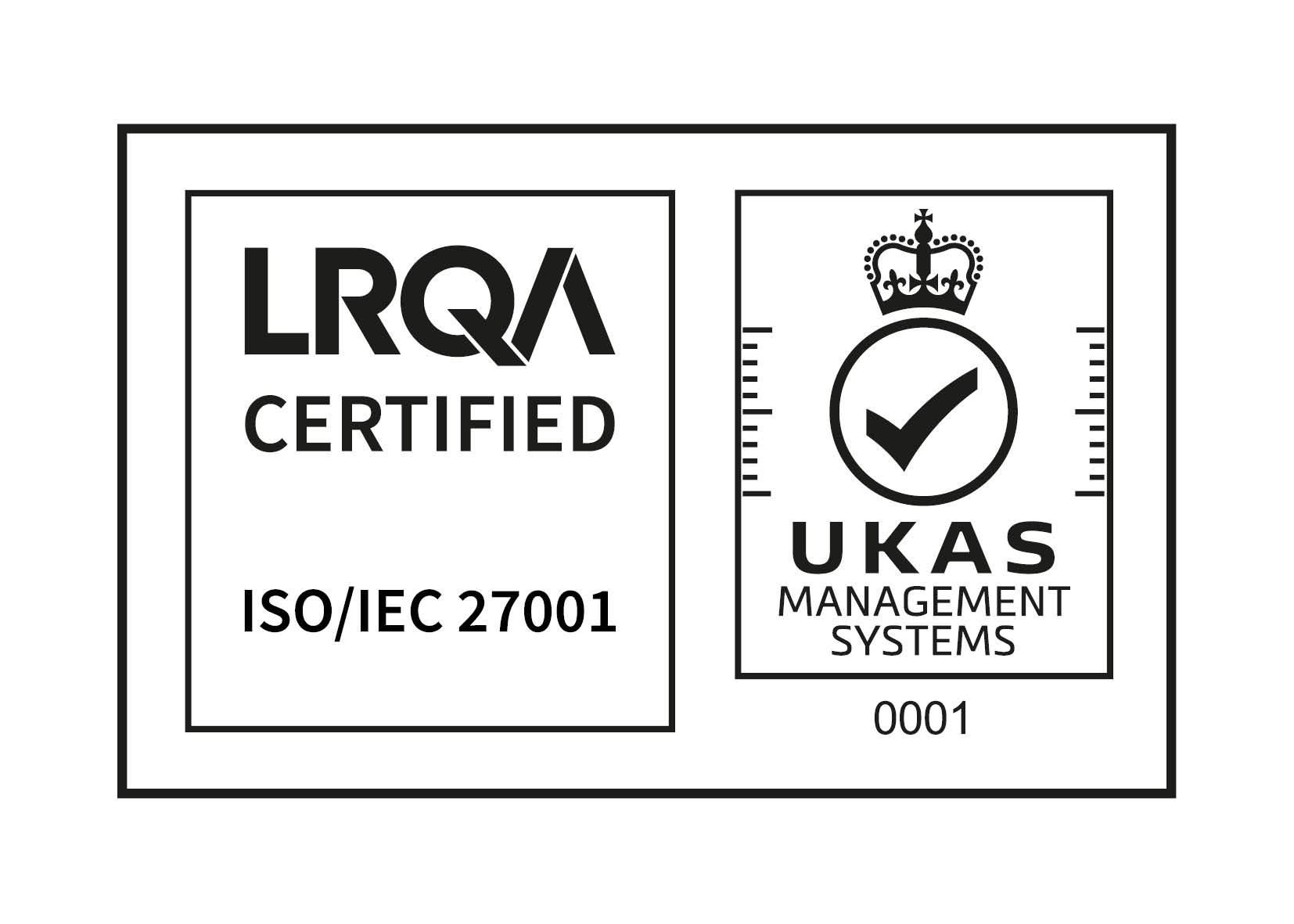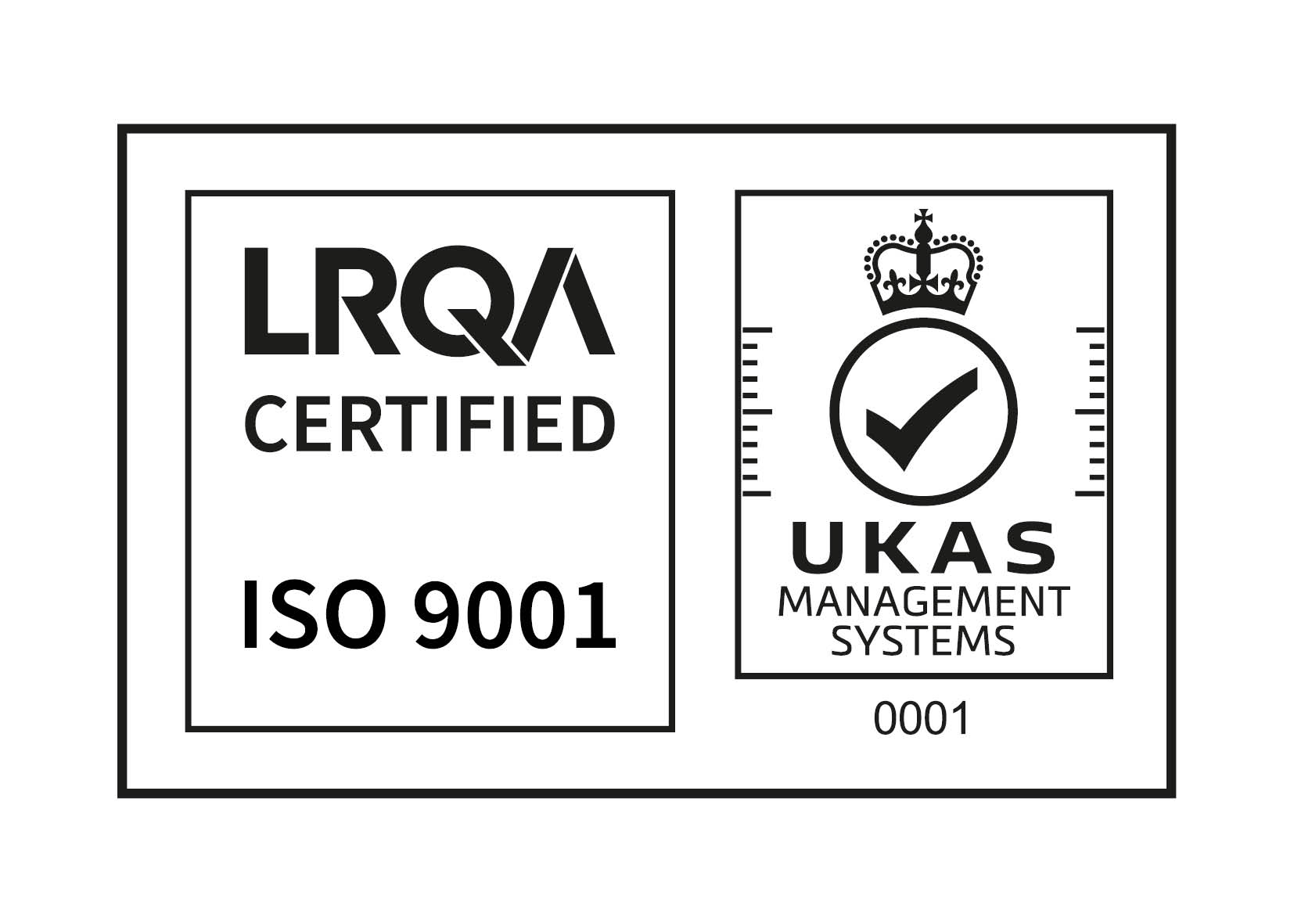Share this
Selecting Employee Relations Software: An In-Depth Guide For HR Managers
by Alex Bussey on July 6, 2023
The right employee relations (ER) software can be transformative – streamlining your workflows, taking the stress out of reporting and ensuring that you have more time to spend on the work that adds real value to your organisation.
 But tying your department to the wrong ER case management solution can be incredibly costly –both in terms of the money you’ll waste on licences/training, and the time you will waste disentangling yourself from software that’s hampering your ability to manage ER cases effectively.
But tying your department to the wrong ER case management solution can be incredibly costly –both in terms of the money you’ll waste on licences/training, and the time you will waste disentangling yourself from software that’s hampering your ability to manage ER cases effectively.
Separating the wheat from the chaff can be a fairly involved process. The ER software market is flooded with competing options that claim to offer very similar features – and a raft of near-identical benefits that are incredibly hard to parse.
To help you zero in on the right software, we’ve documented an exhaustive eight step process that covers everything from requirements gathering through to evaluating compliance with all relevant data protection regulations.
1. Assessing Your Organisation’s Needs
Before you can start evaluating software, you need to understand your requirements.
Now, there’s a very good chance that you will have some cut and dry requirements; most HR departments need their employee relations software to integrate with at least one 3rd party platform that’s already integral to their day-to-day operations.
This might be a payroll or holiday request tracking system. The ability to integrate with these platforms will likely have an impact on your choice of employee relations software.
Depending on how your department operates, you will typically also need specific functionality like the ability to filter employee relations cases by type or attach employee emails to case documents for future reference.
But establishing your requirements should go well beyond basic and fundamental details like this. Switching to a new solution has the potential to reconfigure the way you operate so you need to be thinking systemically to hone in on the right software, and take full advantage of the opportunity on offer.
Start by asking team members what they’d like their ER case management software to do. Where does the current system fall short, and what would they like to see from the solution you’ll be introducing?
We’re talking about the big picture here; you’re not looking for a feature list but you do want a good idea of what your team needs to do their job effectively.
Identifying Critical Pain Points
Beyond that, it’s worth looking at current roadblocks, and making yourself aware of the issues your new employee relations software will need to solve. As an example, reporting is a significant roadblock for many departments using older or less-intuitive systems.
There’s often a real need to report on absence rates, the volume of specific case types recorded over a given period or the number of open cases recorded in a particular business area..
But accessing and transmitting this data without good ER software often necessitates hours of time spent collating, copying and pasting data into a spreadsheet so that you can generate a graph or pivot table.
Knowing that you need to reduce the time spent on this type of busywork will help to guide the decision making process and allow you to identify software that’s right for your organisation.

2. Building A Shortlist Of Desirable Features
Once you know what you need from your new ER software, you can start defining objectives or goals for your new software, and building a list of desirable features. Again, the idea here isn’t to draw up a definitive or exhaustive list of “must haves''.
We’re still very much at the evaluation stage, and simply want to bring increased clarity to the process by working out what you’d like to have. The relative importance of a given feature is significant too. Ideally, you want to know what functionality your organisation would benefit from and how important these features are.
Features to consider may include:
• Case capture tools, such as email integration, webforms or self-serve case portals.
• Workflow automation, including alerts & reminders
• Communication and collaboration tools
• Real-time reporting and analytics dashboards
• Data visualisation for insights and trends
• Recordkeeping and audit trails
• Document and email generation & templates

But it’s important to note that the specific features of interest will depend on the organisation of your department, and the wider context that you’re operating in. Software buying guides often make sweeping claims about the features “everyone” needs to run their department effectively.
But hard-won experience has taught us that departmental needs can be incredibly varied. HR professionals overseeing employee relations for a multi-chain bank will have wildly different needs to HR professionals managing cases for a single steel mill or an educational establishment.
Which is to say that you should draw up a feature list based on your real-world needs, and bear in mind that a feature you never use has no real value to your organisation.
3.Identifying Suitable Employee Relations (ER) Systems
At this point in the process, it’s probably worth taking the time to draw up a shortlist of viable tools. With a detailed list of (prioritised) requirements to hand, it’ll be relatively easy to weed out options that simply can’t provide the necessary features – leaving you with a much smaller pool of potential solutions to choose from.
To do this, you can use comparison sites to get a top-level look at what various tools offer, or even see side-by-side comparison of the feature lists associated with popular solutions
But these platforms rarely provide the level of detail needed to ascertain true suitability – or synergy with your pre-existing processes. They’re a perfectly acceptable way of scoping out the market - but bear in mind that suppliers sometimes pay for rankings and these platforms can be quite broad brush in how they categorise software. Some, for example, lump case management software with ticketing systems - two very different offerings.
But If you really want to drill down and work out whether a given employee relations platform is a good fit for your organisation, you’ll want to examine the features pages of various platforms.
Doing this, you should be able to quickly identify a list of 5-6 platforms that take the right approach – and deliver the functionality you need. 
4. Ensuring Compliance With All Relevant Data Protection Regulations
Once you’re dealing with a relatively small list of potential solutions, you can start looking at the minutia.
First and foremost, we think it’s worth making sure that whatever platform(s) you’re looking at store and handle data in a way that’s compliant with all the data protection regulations you need to follow.
Simply put, your organisation could well be in breach of data protection regulations like the GDPR if you input employee details into a system that doesn’t take the necessary precautions – or leverage the necessary security measures.
You may also find that using SaaS software that is hosted on insecure servers puts you in contravention of one or more applicable regulations, so it’s always worth checking through every potential provider’s data security policy before you go any further. 
Note that we’re not saying that you have to limit yourself to UK or European vendors here. Although these organisations will be more likely to comply with all aspects of UK and EU data regulations, plenty of American companies have also made efforts to support overseas clients by adopting the relevant protections.
Note too that a lot of the language around regulatory compliance can be quite difficult to parse so if you are in any doubt about a given vendor’s ability to provide employee relations software that complies with data protection regulations, always involve your legal team.
They’ll be able to steer you in the right direction. You can also look out for providers who are ISO 27001:2013 accredited.
ISO 27001 is a stringent data security certification that demands a robust framework of policies and procedures covering all aspects of security and risk management, so organisations that have achieved it can be relied on to provide a secure and reliable service.
5. Verifying Technical Suitability
Security credentials established, you can now start drilling down – and making sure that the fundamental building blocks of your potential platform(s) are a good fit for your organisation.
Note that we’re not talking about features here: We’re talking about the way your chosen employee relations case management system will be accessed by your staff, and the way it will integrate with the rest of your tech stack.
If your internal policies dictate that all software has to be installed on company servers, you’ll want to immediately remove any SaaS-only solutions from your shortlist.
Conversely, if your IT department demands that all new software solutions keep themselves up to date because staff don’t have the time to manually install updates every two to three months, you’ll probably want to avoid ER case management software that can only be installed on-premise. 
Then there’s things like backups and customisation options to consider. In real terms, the main considerations here are:
• Are you opting for SaaS or on-premise install?
• Does your chosen solution have good backup and recovery capabilities?
• What are your integration and customisation options like?
• Do you want Single Sign On or other access options required by your IT policies?
But beyond these basic questions, there’s a wealth of fine detail that can and will have a tremendous impact on the way your new software is implemented across your department.
Even something as simple as the scaling process needs to be considered. If you’re using a SaaS solution that allows you to add new seats, licences or features, you’ll find it much easier to scale than you will using an on-premise solution that requires buy-in from IT or (heaven forbid) hardware upgrades.
In simple terms, you can spend time picking through the technical documentation, chat with the providers you’re considering or ask someone from your IT department to review your shortlist.
Any one of these three options will help you ensure that every potential ER case management system on your radar is worth pursuing or - in all likelihood - thin your shortlist down to one or two key contenders. 
6. Vetting Potential Vendors
You may want to engage with this part of the process earlier; we’ve included it here because vendor vetting can be a lengthy and exhaustive process.
It may necessitate several discussions/discovery calls with a potential provider so we think it’s generally best to wait until you are down to the final one or two ER case management software companies on your shortlist.
That said, if you have the resource, you may find that vetting vendors before you start verifying regulatory compliance or looking at the technical setup of 3+ potential solutions saves you from investing time and energy in false positives.
So what is vendor vetting, and how do you do it properly? If you’re running the HR department for an enterprise level company, ombudsman, large charity or similar then your organisation probably has a well-documented vendor vetting process.
If not, but you want to make sure that you take the time to choose employee relations case management software that’s a genuinely-good fit for your business, you’ll find some very useful guides to vetting HR technology vendors on the Society for Human Resource Management website and the HCM Technology Report website.
But in layman’s terms, this is about doing your due diligence and ensuring that all providers on your shortlist are capable of providing smooth service. Risk mitigation isn’t anyone’s idea of fun, but it is important to ensure that any and all vendors have a sound business model and contingency plans for challenging financial situations.
It’s also important to ensure that prospective vendors have a good understanding of their own technology and the domain expertise required to keep their software functioning for the foreseeable future.
It’s also worth investigating the domain knowledge and hands-on experience your prospective vendor has in the HR arena. We’re not HR purists and wouldn’t pretend to be, but we do work closely with the industry and this gives us a sound understanding of the pain points and problems most HR case workers and their managers face on a day to day basis.
Especially when trying to track and manage complex employee cases that need a lot of supporting documentation. We’re also up-to-date on the latest data protection legislation, understand that you need to be able to access 10+ yr old cases at the touch of a button and see uncluttered dashboards that enable your team to operate under pressure.
Other vendors who are simply dipping their toe in the water may not appreciate these requirements, and that can have an impact on the overall usability of their software.
Be thorough when examining credentials, spend plenty of time reading case studies and don’t be afraid to ask for reassurance or documentation. The majority of ER case management software companies will be used to providing additional information for vetting purposes.
What About Demos And Trials?
If you want to dig into the specifics of a potential provider’s company culture – or ask specific questions about their product/service you can (and should) organise a demo of their employee relations software that provides you with one-to-one access to a member of their team.
Most providers will be more than happy to showcase their solution in action and some may even allow you to click around in “dummy” versions if their setup allows it; as well as answering pressing questions that will help you validate their presence on your shortlist.
A word of caution though: Going through the trial and demo process may be necessary for your own validation – or a required part of your organisation’s vendor vetting process - but it can be time consuming.
Say you’re profiling five different solutions and each vendor wants 1-2 hours of your time for a demo. That time, plus the time for follow up calls, additional show-and-tells with wider team members, stakeholder meetings to move the approval process forwards and any other validation work that needs to be undertaken can eat up a lot of your free time.
Which is to say that it may serve you well to hold off on demos and trials until you’ve narrowed your list down to one or two contenders. While the process of investigating several competing platforms can be quite exciting, it’s unlikely to be a good use of your time.
7. Evaluating Ease Of Adoption And Use
Speaking of usability…
Employee case management software will only improve your day-to-day processes if it's adopted properly, and every member of your team knows how to make good use of its features.
Although this part of the selection process is often overlooked, taking the time to review the quality of a potential supplier’s onboarding processes; the documentation and training materials they provide, and any hands-on sessions is an important step.
You may also find that some ER case management software vendors provide extensive e-learning via videos or an app, although this level of hand-holding isn’t always necessary or appreciated.
Over the years, we’ve come to believe that the best onboarding is customised to the needs of a specific organisation. We’ve also learned that it’s best delivered by the people who live and breathe our software but your department may well prefer something with a set structure, or document-heavy onboarding that you can dip into when it’s convenient.
All in all, the important thing is to find a vendor that understands the need to encourage full adoption. A solutions partner that works hard to improve usability and provide some sort of training/support that’s designed to help you make full use of your new employee relations software.
There is a significant cost associated with adopting a new system – both in terms of the up-front price of subscriptions or installation, and in the man-hours that you’ll dedicate to bringing it online and making it an integral part of your process.
Good onboarding should minimise some of those costs and can massively increase your chances of driving a successful transformation so it’s well worth comparing an individual provider’s support capabilities, their helpdesk commitments and their training capabilities. 
8. Considering Future Requirements
You don’t need to be told that HR processes are always evolving; most organisations go through a process of continual evolution and it’s important to bear this in mind when selecting your employee relations software.
A given solution may meet all of your current requirements, but these requirements will change as your organisation grows, legislation changes or experience prompts you to adjust your processes.
And as mentioned above, moving away from software that you’ve outgrown presents its own challenges – particularly if you’ve invested a lot of resource in a complex adoption process, and baked your employee relations platform into your day-to-day workflows.
Better to make sure that your chosen solution has the capacity to grow with your organisation, which means ensuring that the software’s developers are open to adding new features or expanding the functionality of their software
We want to stay objective and refrain from self promotion here, but it’s important to note that good software developers always have a process for evaluating and incorporating user requests.
They’ll also make it relatively easy to reach their product or development teams – especially if you’re a paying customer who makes every effort to embed the software into their HR processes.
This reactive and collaborative approach is key to ensuring that your chosen solution can and will grow with your organisation, so don’t be shy about asking potential providers to provide reassurance.

In Conclusion…
Take your time, and be thorough. The benefits can be tremendous – providing a simple and user-friendly “hub” for all employee cases that’s miles easier to manage than the traditional Excel spreadsheets so many of us are still burdened with.
But onboarding with the wrong solution can be more work than it’s worth and there’s always a chance that you’ll end up tied to a costly subscription that you don’t use so work through each of the seven steps laid out here: Make sure you are thinking about what your organisation really needs and above all, don’t be afraid to ask questions.
If you stay organised and work systematically, picking the software that’s right for your department should be relatively straightforward.
Share this
- December 2025 (2)
- November 2025 (1)
- October 2025 (2)
- September 2025 (1)
- August 2025 (3)
- July 2025 (2)
- May 2025 (2)
- April 2025 (3)
- February 2025 (3)
- December 2024 (1)
- November 2024 (1)
- October 2024 (1)
- June 2024 (1)
- May 2024 (2)
- April 2024 (2)
- March 2024 (1)
- February 2024 (1)
- January 2024 (1)
- December 2023 (1)
- November 2023 (2)
- October 2023 (1)
- August 2023 (2)
- July 2023 (2)
- June 2023 (2)
- May 2023 (1)
- April 2023 (3)
- February 2023 (3)
- December 2022 (2)
- October 2022 (1)
- September 2022 (3)
- August 2022 (2)
- July 2022 (2)
- June 2022 (1)
- March 2022 (2)
- February 2022 (1)
- January 2022 (1)
- December 2021 (1)
- October 2021 (1)
- June 2021 (2)
- May 2021 (1)
- February 2021 (2)
- October 2020 (1)
- September 2020 (1)
- August 2020 (1)
- July 2020 (1)
- June 2020 (3)
- April 2020 (1)
- October 2019 (2)
- September 2019 (2)
- May 2019 (1)
- March 2019 (1)
- November 2018 (1)
- July 2018 (1)
- November 2017 (1)
- September 2015 (1)








